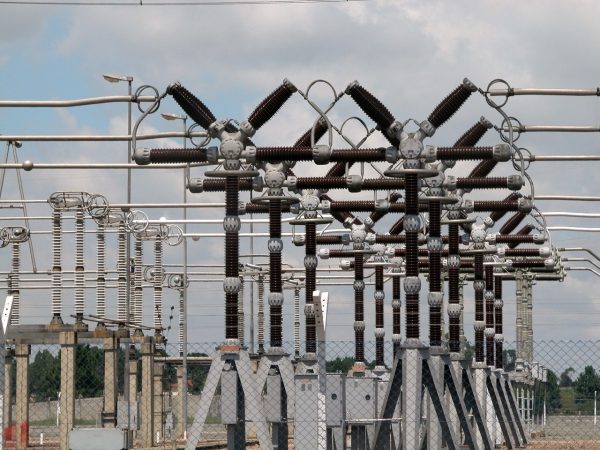By most ratings, Nigerian power sector is presumed to have a huge gap between supply and demand.
Current power demand is estimated at 17.520 megawatts, including latent and suppressed demand.
An African Progress Report even states that more than 90 million Nigerians have no access to electricity.
It says out of this non-electrified population, 17 million people that are un-electrified live in the urban centres, while 73 million live in rural areas.
Observers note that this translates to majority of the non-electrified Nigerians living in off-grid areas where electricity supply is not economical and may not be sustainable due to high cost of constructing transmission infrastructures.
Affirming the decay nature of the nation’s power sector, President Muhammadu Buhari, in his inaugural speech on May 29, 2016, said: “No single cause can be identified to explain Nigerian’s poor economic performance over the years than the power situation.
“It is a national shame that an economy of 180 million generates only 4,000 megawatts and distributes even less.
“Continuous tinkering with the structures of power supply and distribution and close on 20 billion dollars expended since 1999 have only brought darkness, frustration, misery and resignation among Nigerians.
“We will not allow this to go on; careful studies are under way during this transition to identify the quickest, safest and most cost-effective way to bring light and relief to Nigerians.’’
The above statement aptly captures the repulsive situation in the sector and the determination of the current administration to tackle headlong the challenges inherent in the sector.
From the inception of the present administration, some perceptive analysts have expressed concern about how long it will take it to mitigate the challenges in the sector, given the yet non-access to electricity by many Nigerians.
However, the administration targets 10.2 megawatts of electricity by 2019 and by 2030, using all energy mix.
To achieve this, sector analysts estimates that the country will require investments in power generating capacity alone of at least 3.5 billion dollars annually with large investments required in the other supply chain of transmission and distribution networks.
Mr Babatunde Fashola, Minister for Power, Works and Housing, said in a lecture that the Federal Government’s road map for solving the country’s power crises was to attain incremental power wherever it could be found to achieve steady power supply.
He also said that to attain the incremental power and ultimately stable power generation and supply, it was important to address some issues bedevilling the sector.
In a bid to improve power generation, supply and distribution, the Federal Government signed a Solar Power Purchase Agreements worth 1.75 billion dollars with 14 companies to build 1,125 megawatts capacity of renewable power across the country.
The solar projects were expected to be delivered between 12 months and 18 months with some of the companies already delivering their projects.
According to Fashola, the incremental power project of the Federal Government is the development of hydro power through the construction and rehabilitation of several hydro power dams in the country.
In the light of this, the first overhaul of Jebba hydro power plant since it was inaugurated in 1985 had been completed with more construction of mini hydro dams ongoing.
Apart from this, some of the ongoing power projects include the 30-megawatt Gurara hydro power plant in Kaduna, 10-megawatt Tiga dam hydropower plant in Kano, 10-megawatt Oyan dam hydro power plant in Osun and 8-megawatt Challawa dam hydropower plant in Kano, among others.
All these dams are to generate power to complement the Egbin Power Plant in Ikorodu which, hitherto, had only two functional turbines in 2013 but now has six functional turbines.
He said the Federal Government had also begun accelerating repairs of the Forcados pipelines damaged by vandals among other repairs and construction of power infrastructures.
According to him, the government has inaugurated the Board and Management of the Rural Electrification Agency to complete all un-completed numerous rural projects in the country.
At a monthly power sectors operators’ meeting recently, Fashola said the Transmission Company of Nigeria had provided a progress update on the 16 critical projects designed to improve wheeling of electricity to the distribution companies.
He also noted that the government had planned to inject N701 billion to assist the electricity generating companies to pay for gas required to power their plants in addition to the initial N213 billion intervention fund.
However, in spite of government commitments in addressing the perennial challenge in the sector in the last two years, most Nigerians still express dissatisfaction on the abysmal performance of the sector.
In view of this, concerned citizens and non-governmental organisations have accused the Ministry of Power and the Nigerian Electricity Regulatory Commission of the inability to enforce the provisions of the Electric Power Sector Reform Act of 2005 on the operators in the industry.
They note that although the power sector comprises generating, distribution and transmission, most Nigerians have been asking which of the components of the sector could be held responsible for incessant power failure.
But the generating companies say they are capable of generating 8,500 megawatts presently, given the provision of all necessary incentives.
The transmission companies also claim they have a capacity to wheel 5,500 megawatts of electricity for distribution, attributing major hiccups in their investment plans, especially in extending their network base of 4,500 megawatts, to lack of cost reflective tariff.
Irrespective of these explanations, some Nigerians and the Senate blame the privatisation of the power sector as the reasons for inadequate power supply and call for reversal.
With privatisation of the sector, government is retaining the transmission aspect of the chain, meaning that government is left with the responsibility of policy making and regulation of the sector.
Whatever further actions on how to improve the sector are, concerned Nigerians insist that government should create enabling environment for the participation of more private sector investors to make quality power supply sufficient.
According to them, there is need to encourage inflow of investment in generation, transmission and distribution to harness the enormous potential of regular power supply for industrial development.(NANFeatures)




 Premier League
Premier League